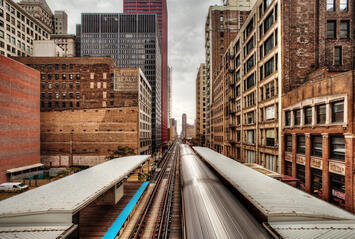
With the COVID-19 pandemic declared over, a significant question for politicians, planners, and pundits alike is what to do with city centers and old urban cores after the pandemic pushed many Americans to move away from dense urban areas. For many, the central city remains an idealized version of spatial organization, serving as an engine of creativity, innovation, opportunity, upward mobility, and the height of civilization itself. But most Americans feel differently, preferring to live in environs well outside urban cores and not just within suburbs but in small towns and rural areas as well. Even younger generations of Americans—who traditionally flocked to big cities for careers, social lives, and cultural amenities—show greater interest in suburban living than dense city living.
A frequent concern amongst theorists involves community cohesion and spatial organization. One real question now is how population diffusion away from urban areas is impacting democratic vitality; as individuals move to less dense areas with more privacy, it is widely believed that they will naturally start to isolate themselves from the wider public, impoverishing the public sphere. Fortunately, these concerns are deeply overblown. Data from PACE’s 2021 Civic Language Perceptions Project, which sampled 5,000 voters in 2021, shows that attitudes toward democracy and community participation vary minimally when one moves from urban to suburban and rural areas.
When presented with a list of activities and behaviors that voters think are important to ensure democracy works, responses change little depending on the respondent’s environment. For example, 71 percent of urban respondents believe that voting is critical behavior for a democracy to be successful, while 74 percent of rural and 80 percent of suburban residents feel the same way. While non-urban residents may be less likely to share residential spaces with their neighbors and they may directly interact a bit less often with their immediate neighbors than their city dweller counterparts, the residents of the often mischaracterized “lonely and desolate suburbs” are anything but electorally disengaged.
Turning to other forms of direct local engagement, non-urban areas edge out the urban cores again, but the spatial differences are negligible. When it comes to the salience of volunteering, just under a third (31 percent) of urbanites recognize the importance of volunteering with slightly higher numbers of rural (34 percent) and suburban (34 percent). On attending public meetings such as town halls, community forums, school board meetings, and library events, non-urban areas are again slightly more inclined to engage. Thirty-nine percent of rural and 39 percent of suburban residents believe that being part of communal events is valuable compared to 34 percent of urban residents. Discussing politics with neighbors is important to 29 percent of city-dwellers areas, compared to 26 percent of suburbanites and 24 percent of people in rural areas, presumably due to distance—but these are minimal differences.
Predictably, interest in protests is higher in urban cores (16 percent) compared to suburban (12 percent) and rural (12 percent) areas. This is presumably because there are fewer central and often historic locales to demonstrate and advocate for positions. Residents of urban areas are only slightly more likely to advocate for social or political issues, with 15 percent of residents stating that this is important for democracy compared to 10 percent of residents in both rural and suburban areas. These figures are relatively small across all populations and have little more than a trivial impact on Americans’ beliefs on how to have a thriving civil society. Therefore, the notion that rural and suburban areas are civic wastelands compared to cities is simply untrue. Values toward participatory and democratic norms are fairly consistent across urban form. Even if activism and demonstrations in older, urban spaces with historical buildings and halls capture the imagination of civic vitality—like Union and Washington Squares in New York City—it is wrong to write off leafy, quiet suburbs as civic wastelands.
Read the rest of this piece at AEI.
Samuel J. Abrams is a professor of politics at Sarah Lawrence College and a senior fellow at the American Enterprise Institute.
Photo credit: David Harmantas via Flickr under CC 2.0 License.













O tempora, O mores
The history of this country is all the evidence one needs that non-urban living does not of itself lower civic participation. Just look at the 18th and 19th century Town Meetings of New England, for example. And "activism and demonstrations" are hardly indicators of civic health. They are merely "happenings," parties for young people who take lots of pictures of themselves holding up signs with absurd phrases they made up while stoned. Fun. Then they send around the photos on social media and satisfy their narcissism by looking at them over and over. Just look at photos and videos of these so-called protests and you'll see for yourself. A handful of zealots shouting through microphones followed by a mass of kids smiling and laughing and having a great time. You're only young once, as my father used to say.
What reduces civic activity, at least as traditionally understood, are all the different ways in which we can entertain ourselves today. There is such a greater variety of things to do now than in a 19th century farming community. Drive through any rural area and you'll see the satellite dishes on the roofs. But mostly, socializing -- which was a prime purpose of town meetings as it was church attendance -- is done on the Internet today and not by assemblings of persons in a physical meeting space.